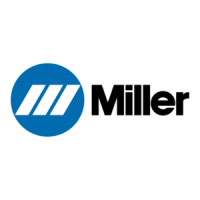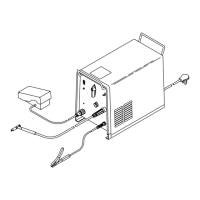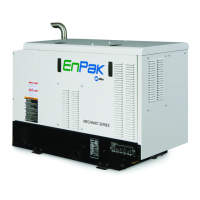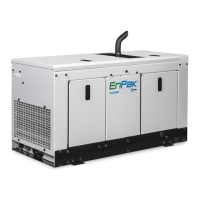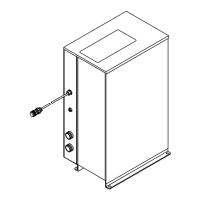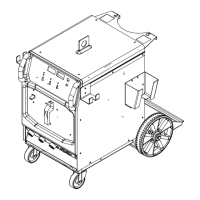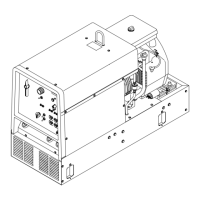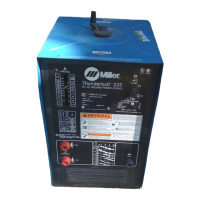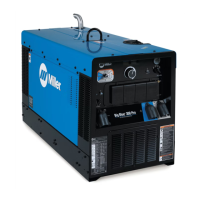Do you have a question about the Miller econo twin and is the answer not in the manual?
Discusses learning safety, hazards, and the importance of following practices.
Covers protective clothing, eye/head protection, avoiding sparks, and medical first aid.
Details arc intensity, radiation, heat, sparks, fumes, and compressed gas hazards.
Lists relevant industry standards for welding and cutting safety and compliance.
Manual purpose: familiarizing personnel with design, installation, operation, and troubleshooting.
Instructions for inspecting equipment for damage upon arrival and filing claims with carriers.
Describes the unit as a single-phase welding power source for SMAW and GTAW processes.
Emphasizes reading the safety section before operation to prevent injury from misuse.
Guidance on selecting a proper installation site for dependable service and air movement.
Precautionary measure to ensure maximum protection against electrical shock during installation.
Details on connecting single-phase power service and tap connections for voltage.
Information on connecting welding cables, jack plugs, and secondary receptacles.
Instructions for connecting remote on-off control for high-frequency using a switch.
Details on AC/DC selector, amperage range, adjustment control, and indicator.
Explains the dual function of the power switch as on/off and overload breaker on HF models.
Describes the ON/OFF-REMOTE switch for high-frequency control on HF models.
Explains duty cycle ratings and provides a chart to determine safe output at various cycles.
Shows output voltage at different output currents and how to determine amperage.
Step-by-step procedure for performing Shielded Metal-Arc welding.
Step-by-step procedure for performing Gas Tungsten-Arc welding with HF models.
Procedure for safely shutting down the welding power source after operation.
Information on the fan motor's lifetime lubrication and lack of maintenance requirements.
Recommendation for periodic cleaning of the transformer by blowing out dust and dirt.
Suggestion to clean the rectifier occasionally with compressed air to maintain performance.
Advises lubricating the movable shunt lead screw and slider annually with high-temperature grease.
Guidance on inspecting and adjusting spark gaps for optimal high-frequency output.
Procedure to adjust shunt guides to compensate for vibration noises.
Importance of proper installation and user certification for FCC compliance requirements.
Explains four ways interfering radiation can escape from HF welding machines.
Requirements for using solid metallic conduit and proper grounding for power service leads.
Guidance on choosing a location near a good ground and bonding the machine case.
Recommendations to keep welding leads short and close together to minimize radiation.
Discusses H.F.I. zones and the need for shielded wiring in the welding area.
Specifications for making a "good ground" connection using a driven rod or cold water pipe.
Addresses the assumption that metallic buildings eliminate radiation, clarifying grounding needs.
Option for users to conduct an individual field survey and certify installation compliance.
A list of questions for installers to verify compliance with installation requirements.
Discusses learning safety, hazards, and the importance of following practices.
Covers protective clothing, eye/head protection, avoiding sparks, and medical first aid.
Details arc intensity, radiation, heat, sparks, fumes, and compressed gas hazards.
Lists relevant industry standards for welding and cutting safety and compliance.
Manual purpose: familiarizing personnel with design, installation, operation, and troubleshooting.
Instructions for inspecting equipment for damage upon arrival and filing claims with carriers.
Describes the unit as a single-phase welding power source for SMAW and GTAW processes.
Emphasizes reading the safety section before operation to prevent injury from misuse.
Guidance on selecting a proper installation site for dependable service and air movement.
Precautionary measure to ensure maximum protection against electrical shock during installation.
Details on connecting single-phase power service and tap connections for voltage.
Information on connecting welding cables, jack plugs, and secondary receptacles.
Instructions for connecting remote on-off control for high-frequency using a switch.
Details on AC/DC selector, amperage range, adjustment control, and indicator.
Explains the dual function of the power switch as on/off and overload breaker on HF models.
Describes the ON/OFF-REMOTE switch for high-frequency control on HF models.
Explains duty cycle ratings and provides a chart to determine safe output at various cycles.
Shows output voltage at different output currents and how to determine amperage.
Step-by-step procedure for performing Shielded Metal-Arc welding.
Step-by-step procedure for performing Gas Tungsten-Arc welding with HF models.
Procedure for safely shutting down the welding power source after operation.
Information on the fan motor's lifetime lubrication and lack of maintenance requirements.
Recommendation for periodic cleaning of the transformer by blowing out dust and dirt.
Suggestion to clean the rectifier occasionally with compressed air to maintain performance.
Advises lubricating the movable shunt lead screw and slider annually with high-temperature grease.
Guidance on inspecting and adjusting spark gaps for optimal high-frequency output.
Procedure to adjust shunt guides to compensate for vibration noises.
Importance of proper installation and user certification for FCC compliance requirements.
Explains four ways interfering radiation can escape from HF welding machines.
Requirements for using solid metallic conduit and proper grounding for power service leads.
Guidance on choosing a location near a good ground and bonding the machine case.
Recommendations to keep welding leads short and close together to minimize radiation.
Discusses H.F.I. zones and the need for shielded wiring in the welding area.
Specifications for making a "good ground" connection using a driven rod or cold water pipe.
Addresses the assumption that metallic buildings eliminate radiation, clarifying grounding needs.
Option for users to conduct an individual field survey and certify installation compliance.
A list of questions for installers to verify compliance with installation requirements.
| Frequency | 50/60 Hz |
|---|---|
| Phase | 1-Phase |
| Processes | MIG, Flux Cored |
| Welding Amperage Range | 30 - 175 A |
| Output Current Range | 30 - 175 A |
